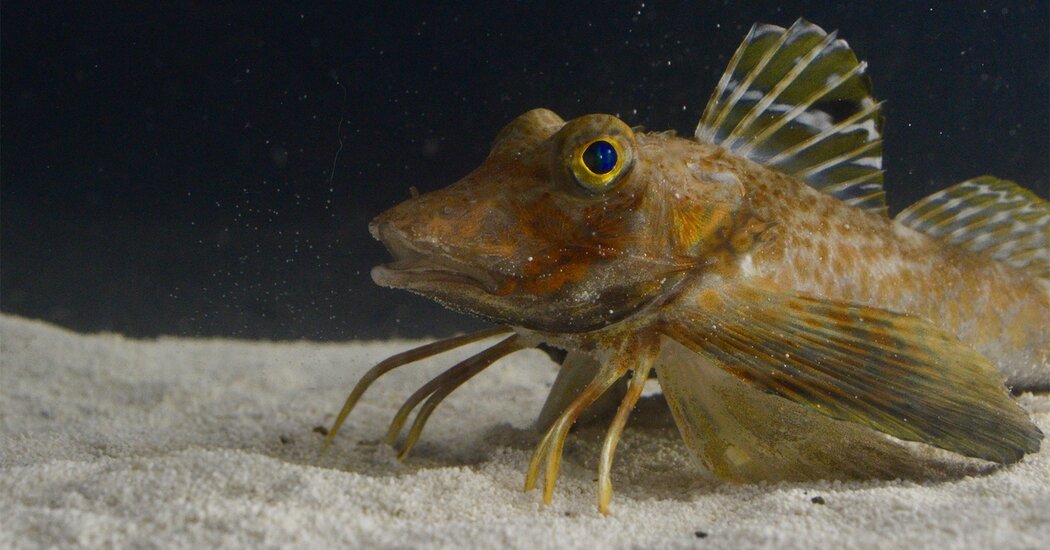While the sea robin has legs, it still doesn’t need a bicycle.
The sea robin has fascinated scientists for decades. It has the body of a fish, the wings of a bird and the legs of a crab.
“Legs on a fish sound like, um, well, that’s one of the weirdest things I’ve ever seen,” said David Kingsley, a developmental biologist at Stanford University. He compared sea robins to aquatic centaurs.
If that wasn’t special enough, two studies published Thursday in the journal Current Biology by Dr. Kingsley and other researchers show that sea robins use their spindly legs to taste stuff, too.
Dr. Kingsley’s team was interested in identifying what spurred the creation of three pairs of bendable appendages with leg-like bones, muscles and nervous connections.
First, Amy Louise Herbert, a researcher in Dr. Kingsley’s lab, worked to make sea robins reproduce so that the team could observe the development of their embryos. The legs dropped out of the fins, they settled down on the seafloor, and the fish could start trodding around.
Then the team sequenced the fish’s genome and found that a gene called tbx3a — a variation of tbx3, which helps make limbs in humans too — plays a crucial role. After using CRISPR gene editing to tweak tbx3a, they found that some fish hatched with smaller protuberances more similar to fins than legs. Others had just one pair of legs or a whopping five pairs instead.
